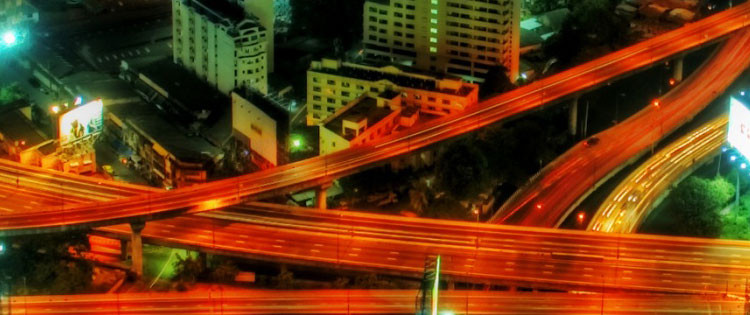Link to article here.
This is the new frontier in road policy — putting drivers on a ‘road diet’ as they do in leftist states like California and New York, to force people out of their cars and into mass transit. It must be stopped in every form. Tolls are just one way they use to restrict travel and try to change drivers’ behavior to fit their social justice agenda. Currently, tolls aren’t an available option, but that doesn’t stop them from implementing other forms of driver misery to enact their anti-car agenda.
Houston to Unveil Vision Zero Plan for Zero Traffic Fatalities by 2030
Mayor Turner says the city is close to releasing specifics of transportation planning that may include narrowing streets to slow traffic and increasing sidewalks, bike lanes, and access to public transit.
By Holly Hansen
The Texan
November 9, 2020
Houston Mayor Sylvester Turner announced that Texas’ largest city would soon be unveiling specifics of an initiative to attain zero roadway deaths by the year 2030.
Joined in a Friday afternoon press conference by Texas Transportation Commissioner Laura Ryan, Turner said that the city had been collecting information and would soon be publicizing new plans crafted in collaboration with city departments, Harris County, METRO, and social justice advocates.
Turner and Ryan noted that as of November 7, Texas had not gone a day without at least one traffic death in 20 years, and both expressed support for instituting changes that would eventually eliminate all traffic deaths.
“No loss of life is acceptable,” said Turner. “That’s why Houston joined the Vision Zero network, an international movement for safe streets and our commitment to end traffic deaths and serious injuries on Houston streets by 2030.”
Developed in the 1990s by Swedish activists, “Vision Zero” refers to efforts to craft transportation policies based on the socio-political ethic: “Life and health can never be exchanged for other benefits within the society.”
Since then, Vision Zero concepts have been adopted by the United Nations (UN) and are promoted under the organization’s 2030 Agenda for Sustainable Development and a special resolution to improve global road safety.
Although specifics of Houston’s plans are not yet available and the mayor invited residents to continue to provide comment at the city’s Vision Zero website, Turner explained that the goal would be to shift the way the public views mobility, transform road and sidewalk design, and communicate the value of “life over speed.”
“This initiative will serve as the umbrella for the actions we are taking to improve our streets’ safety,” said Turner.
Houston Director of Public Works and Engineering Carol Haddock explained that the city had identified 12 highly dangerous intersections that would be prioritized. Some solutions mentioned by Turner and Haddock include expanding sidewalks by 50 miles per year, adding bike lanes of 25 miles per year, and including curb ramps and increased access to transit.
Haddock also said that the city would move away from widening streets in favor of more narrow streets that would slow down vehicle traffic.
“We may scale back six-lane plans to four-lane plans with improved transit and better pedestrian areas.”
Turner said narrowing streets for slower traffic would push more people to use public transportation.
“When the buses and the trains are going faster than the cars and the trucks, people will exit the cars and the trucks and use the buses and the trains.”
Earlier this year, Harris County also adopted a Vision Zero resolution, and the Texas Department of Transportation (TXDOT) has also launched an “End the Streak” initiative, although with slightly less ambitious goals to cut state highway fatalities in half by 2035 and reach zero fatalities by 2050.
Ryan said that 2020 fatalities as of November 7 had already surpassed those of 2018 and 2019.
“During the height of the COVID-19 pandemic, we had hoped that we were on our way to avoiding that anniversary and ending that pain. Traffic levels on Texas highways dropped nearly 44 percent in some parts of the state, and it looked as if we were finally, finally on the road to zero. But while traffic was down, fatalities did not follow. In fact, Texans keep dying in traffic crashes every day.”
Commissioner Ryan said leading causes of traffic injury and death were speeding, driving under the influence (DUI) of alcohol or drugs, driving while distracted, and not wearing a seatbelt.
TXDOT is spending $600 million under the state’s initiative, which includes measures such as widening roads, and adding rumble strips, lighting, and additional turn lanes.
Ryan noted that driving under the influence is related to one in four traffic fatalities and Houston Regional TXDOT Director Eliza Paul said that in her region DUI is the highest leading cause of traffic fatalities.
Possible remedies listed on the city’s website include “moving away from punitive actions for minor traffic violations and towards enhanced penalties for serious offenses,” including driving under the influence, running red lights, and speeding. Other remedies include instituting a hands-free ordinance and lobbying the state to reduce the default speed limit on city residential streets to 25 miles per hour and on all other city streets to 30 miles per hour.
Houston also echoes priorities listed at the national Vision Zero Network website which ties traffic planning to “Acting for Racial Justice and Justice Mobility,” and states the city will seek guidance from grassroots organizations “to provide guidance on equitable justice” in transportation planning.
Other Texas cities adopting Vision Zero include Austin and Fort Worth.
Proponents of Vision Zero are lobbying local, state, and national leaders to treat transportation as a public health issue since motor vehicles contribute to carbon emissions and associated health issues. As such, the group says all future funding increases to the transportation budget should “be allocated for transit, walking and micro-mobility in line with UN Sustainable Development Goals.”


